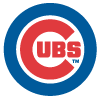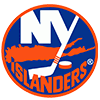Also this week, I take a close look at Alexis Rios in an attempt to determine whether he's playing over his head or if he can actually keep this up. My conclusion may surprise you; so, as always, I welcome your feedback in the comments.
Upgrades:
Carlos Santana, C, Indians: Any catcher who posts 13 HRs, more walks than strikeouts, and a 1.044 OPS in 196 Triple-A at bats is going to be really good; it's only a matter of how soon. The problem is that a lot of rookies, even elite prospects, often struggle to adjust to major league pitching. So here's how I'd evaluate Santana. If I'm near the bottom of my league's standings, such that I needed to emphasize ceiling
Also this week, I take a close look at Alexis Rios in an attempt to determine whether he's playing over his head or if he can actually keep this up. My conclusion may surprise you; so, as always, I welcome your feedback in the comments.
Upgrades:
Carlos Santana, C, Indians: Any catcher who posts 13 HRs, more walks than strikeouts, and a 1.044 OPS in 196 Triple-A at bats is going to be really good; it's only a matter of how soon. The problem is that a lot of rookies, even elite prospects, often struggle to adjust to major league pitching. So here's how I'd evaluate Santana. If I'm near the bottom of my league's standings, such that I needed to emphasize ceiling over floor, I'd start Santana, right now, even in an eight team, one-catcher league. If I'm around the top of the standings, such that I needed to emphasize floor over ceiling, I'd stick with a more-established option.
Justin Morneau, 1B, Twins: My decision to include Morneau as an Upgrade in this article came after reading Dalton's recent blog. So instead of re-inventing the wheel, doing a different write-up, and passing it off as my own idea, I might as well give Dalton the credit and quote him: "Justin Morneau has always been pretty good, but he's been the best player in the American League over the first two months this season. It's hardly surprising for someone to peak at age 29, but his jump in performance has been quite remarkable. His walk rate has spiked (17.9 BB%) greatly; it's a huge jump compared to his previous high, but this is a trend, as Morneau has increased his BB% in each of the past four years. His 1.148 OPS is the best in baseball by a wide margin. This despite Target Field suppressing homers at a significant rate (third lowest in MLB), as Morneau has hit 11 of his 13 home runs on the road. Having an on base machine like Joe Mauer (who rarely knocks himself in via the HR) hitting right in front of him is a nice advantage as well."
Aubrey Huff, 1B/OF, Giants: Like Troy Glaus and Scott Rolen, Huff is one of those guys you tend to ignore. "He used to be good, but he's in his thirties, been injured, and changes teams like new moms change diapers." The fact that Huff is on the West Coast makes it even easier to overlook him. Now that it's mid-June, and Huff is posting a line of .300/.396/.498 playing every day for the Giants, it's time to re-evaluate him. My analysis of Huff starts with 2008, when he emerged out of nowhere, posting a career year (.304 AVG, 32 HRs, 108 RBI) at age 31. After failing to duplicate those stats through 430 ABs with the Orioles in 2009, Huff was traded mid-season to the Tigers, where he hit just .189 over 40 games. Many thought his career was winding down, and our 2010 outlook indicated as much, concluding by saying "his days as a regular contributor appear to be nearing an end." Clearly that was off, so where did we (and many others) go wrong? Well, Huff was terrific in 2008 and is playing just as well in 2010 in a spacious park. His 2009 numbers seemed to be the start of his decline, but a closer look shows he was just unlucky. In his 40-game stint with the Tigers, Huff had a .189 AVG and just two homers, despite a LD% of 20%, due to a .198 BABIP and 4.5% HR/FB. It's time to ignore Huff's 2009 and treat him as the same player he was in 2008 - just remember that the spacious park will keep his HR total below 30.
Ryan Zimmerman, 3B, Nationals: Last week, a couple of subscribers argued that Zimmerman was nearly as valuable, for fantasy purposes, as Evan Longoria. I didn't agree, but my review of Zimmerman showed he deserves an upgrade. Here's my take - Zimmerman went from a good hitter to a great one when he improved his plate discipline. If that sounds overly simplistic, check this out:
| BB/K | OPS | |
| 2008 | .44 | .774 |
| 2009 | .61 | .888 |
| 2010 | .86 | .979 |
Alexis Rios, OF, White Sox: I upgraded Rios a few weeks ago, but when I saw him steal his 19th base the other day (after already having posted 13 HRs), my first thought was "this is ridiculous. I need to do a detailed breakdown in Barometer." Anyway, as I look at Rios' stats, the first thing that jumps out at me is a LD% of 25%. Wow. I've upgraded other players in recent weeks, comparing them favorably to hitters like Pujols based on a LD% of 20%. A LD% of 25% is off-the-charts. As I compared that to Rios' prior seasons, an interesting trend emerged. From 2006-2008, when Rios was considered an up-and-coming hitter with the Blue Jays, his LD% was between 21% and 23% each year, and predictably, his BABIP was above .300 each such year. In 2009, when Rios looked like he didn't belong in the major leagues (.530 OPS in 146 ABs with the White Sox), his LD% fell to 17% (including just 14% with Chicago) and his BABIP fell to .273. Now, though, 2009 looks like an anomaly. Rios HR/FB is a bit fortunate at 12.4 - he's never been above 8% in any season, but before you call Rios lucky, look at that LD% as well as his drastically improved plate discipline. Coming into the year, Rios' career BB/K was .39; this year, it's .72. That's an extraordinary increase, especially when you consider his previous career high was just .53. As I study these numbers, I'm confident that Rios' 2009 was not the norm (perhaps he had a personal or family problem) and that his 2010 stats, except for a slightly home run inflation, are for real.
Michael Stanton, OF, Marlins: Stanton is to the Marlins what Strasburg is to the Nationals, just without the same hype. The accolades will come for Stanton, though - anyone who hits 21 HRs in 190 ABs at Double-A at age 20 is going to be really good. Like Santana, it's just a question of how soon. In yearly leagues, I'd treat Stanton the same as Santana - if you need upside, play Stanton; if you need floor, get a more-established, similarly valued option. (Quick story: I had a reunion with a bunch of college friends at a Single-A game in Greensboro in 2008. I graduated from Wake Forest, just thirty minutes from Greensboro in Winston-Salem. The only prospect I had heard of on either team was Matt Dominguez, the Marlins first-round pick, who I scouted a bit between conversations. Anyway, during the game, Stanton crushed a homer to center. I remember thinking, "wow" but dismissed it as some no-name, 18-year-old, Single-A player hitting a homer. As it turns out, Stanton hit 38 other homers that season, and that wound up being the year he put himself on the map - and lots of prospect lists. Just goes to show that you never know when you might be watching the next stud prospect or future All Star.)
Daniel Nava, OF, Red Sox: Nava was undrafted out of college and is already 27, so he's not a prospect. But with Jacoby Ellsbury and Jeremy Hermida both on the DL with rib injuries, Nava has a chance for some short-term playing time, especially after hitting a grand slam in his first at-bat on Saturday. Nava's Triple-A stats suggest he could stick around for a while, as he was leading the Red Sox Triple-A affiliate in AVG (.294), OBP (.364), SLG (.492), HRs (eight), and RBI (38).
Stephen Strasburg, SP, Nationals: I concur with the 6,433 articles that have been written about Strasburg in the past week. I'm not sure what else I can say that hasn't already been said, so let me conclude by naming two SPs I'd rather own than Strasburg in yearly leagues (Justin Verlander, Philip Hughes) and two I'd prefer Strasburg over (Ryan Dempster, Chad Billingsley).
No Change:
Pablo Sandoval, 1B/3B, Giants: When I saw Sandoval hitting eighth for the Giants the other day, I knew it was time to consider him for a downgrade in this column. But when I studied Sandoval, I didn't see any reason to downgrade him. Yes, his stats are down across the board from 2009, but nothing about his underlying stats is any different. Sandoval's BB%, K%, and LD% are all basically the same as last year. As I see it, the difference in Sandoval's stats is due to a lower BABIP and a HR/FB of just 4.0% (down from 10.4% in 2009). If I owned Sandoval, I'd be patient, and if I didn't own him, I'd drop an email to an owner who may be impatient with his slow start.
Downgrades:
Joe Blanton, SP, Phillies: Blanton had a career year in 2009, posting 12 wins, 163 strikeouts, and serviceable ratios. Prior to the season, his value was good enough that there were a few cries of "BID MORE" when I got Blanton for a dollar in the 15-team Staff League. In 2010, though, nothing has gone right for Blanton - so much so that I wish someone had "bid more." Blanton started the year on the DL with an oblique strain, and since returning, he's gone 1-4 with an ERA over 6.00. His strand rate is just .615, and that's sure to improve, but not stranding runners is what happens when your K/9 IP is just 4.5 and you allow nine homers in 43 innings.
Wade Davis, SP, Rays: After a solid start to the year, Davis has really been struggling, and at this point, there's nothing good about his numbers - a WHIP of nearly 1.5 and a K/BB of just 1.53 pretty much sums it up. Worse yet, the Rays are playing to win in 2010, so they don't have the luxury of letting Davis work through his struggles, especially with Jeremy Hellickson performing well in Triple-A.





































